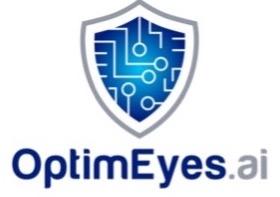The same is true for corporate leaders. Investment in one area of a business is contingent on the health of other units. Procurement and supply chain management, for example, must synch with manufacturing.
This common-sense principle often collapses, however, when it comes to risk assessment. Leaders of large companies typically don’t have a timely, integrated, contextual picture of the threats facing their organizations. As a result, they can’t see the whole playing field when they set priorities, make tradeoffs, and execute responses related to active and impending threats.
Risk management practices and technology have not kept pace with the evolving, accelerating cybersecurity, data privacy, and compliance risks facing enterprises. The need to integrate these siloed views is greater than ever before: The number of data breaches in the U.S. in the first three quarters of 2021 surpassed the total for all of 2020.Targets included Facebook, LinkedIn, Microsoft, Accenture, and T-Mobile. Ransomware attacks increased 150% in 2020 and the amount paid by victims increased 300% — and continued to rise in 2021.
THE BENEFITS OF SEEING THE BIG PICTURE
More integrated, automated, data-driven risk modeling software promises to provide a holistic operational view of risk that will:
- Facilitate fast, proactive responses to threats— Continuous, digital monitoring of risk exposure flags emerging and escalating threats.
- Improve prioritization— An enterprise-wide view that also quantifies the potential cost of each risk enables you to identify and address the biggest, costliest threat or vulnerability first.
- Enable better budgeting and financial decisions— Better intelligence regarding risks’ relative scope and potential impact helps you to allocate finite resources most effectively.
- Result in targeted action— Modern risk modeling solutions must provide the ability to show you what’s happening inside your own organization, as well as enable you to benchmark against your peers.
DRIVING CONSISTENT STRATEGIC EXECUTION
The ability to serve multi-level risk management and executive level personas within an enterprise also enables companies to align top-to-bottom decision-making within your operations, says Phil Quade, former Chief Information Security Officer (CISO) for a major cybersecurity company, and long-time officer in the National Security Agency.
Executives and board members, Quade explains, have a lexicon and criteria for plans and risk management, but they often are disconnected from the CISO’s planning and risk decisions at the strategic and tactical levels. Further downstream, he continues, there may be a different lexicon and criteria that a security operations team uses to make decisions on system access, monitoring, confidentiality, resiliency, and other issues.
“What the RiskOpsAI™ capability provides,” Quade says, “is the ability for each of those three layers — the executive layer, the CISO/CIO, and the security ops teams — to make decisions that are consistent and mutually supportive. That results in say, an entry-level security ops person making a decision that is directly in line with a business goal that might be talked about at the board. And the opposite’s also true: a board member can make a decision that’s not so abstract or esoteric that the security ops person can’t put it to good use.”
Ultimately, software that provides an integrated, holistic view of all the risks facing an enterprise will facilitate better decision making and consistent strategic execution at all levels of your organization.
To hear more from Phil on how an integrated, holistic approach better positions you against cyber risk, watch the full 5 1/2-minute video interview with him as part of our CXO Interview Series: The New Age of Enterprise Risk.
